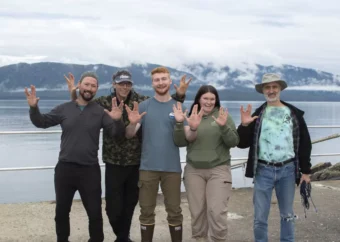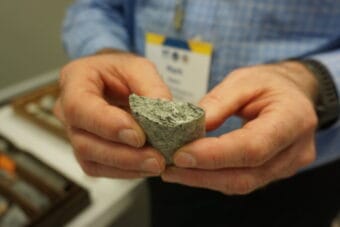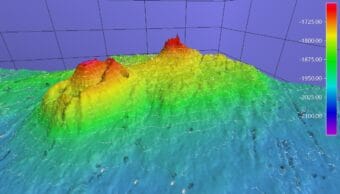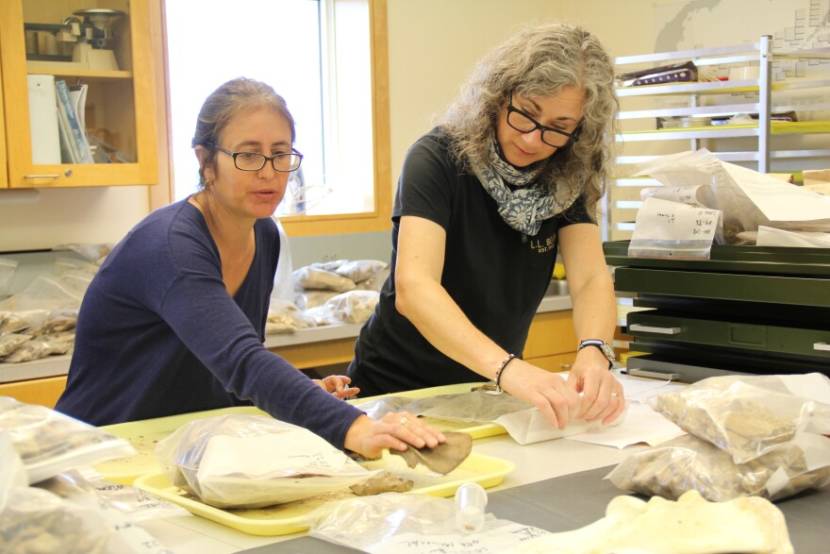
Researchers looking into the decline of Steller sea lions over the last decade noticed that the concentration of mercury levels in lion pups was increasing in some parts of the Aleutian Islands — but they didn’t know why.
Now, a group of scientists from around the nation are working to solve that mystery with a research project called Aleutian Mercury Dynamics.
The project’s goal is to create a timeline to see mercury levels in the Aleutian Islands over the last few thousand years.
“We are looking at how mercury is present in the marine food web over thousands of years, to better understand implications for today,” said Caroline Funk, an archeologist from the University of Buffalo in New York.
Funk traveled to Unalaska in the summer of 2021 with another scientist from the project, Nicole Misarti from the University of Alaska Fairbanks. Together, they collected tiny fragments of bone from Steller sea lions, northern fur seals and Pacific cod to bring to Fairbanks and scan for mercury.
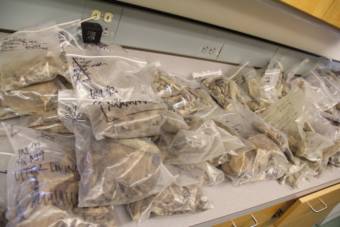
The Museum of the Aleutians in Unalaska has the remains from midden sites — mounds of refuse from ancient villages — across the region, some dating back more than 4,000 years.
The bone fragments come from Unangax̂ villages across the Aleutian chain. This can be a culturally sensitive topic, so the researchers are working closely with the museum, as well as Unangax̂ tribes and corporations across the region.
Mercury can spike for natural reasons. Two prime causes are volcanic eruptions and the melting Arctic. When a volcano erupts, it releases mercury into the atmosphere. Additionally, permafrost stores mercury, so the element is released as the permafrost thaws.
But human activity can also release mercury into the atmosphere. Industrial activities, like burning fuel, release mercury as well.
The mercury research project aims to see if there were spikes in mercury across the region in pre-industrial times. That would help answer the question of whether this is solely a human-caused problem, or if it predates human activity.
“Is it coming from factories down south or in Asia that’s being blown over and dropping here?” Misarti said. “If we look 4,000 years in the past, and we have times…when there are spikes in mercury that are as much or bigger than the mercury we’re finding now, then we know this isn’t completely a human problem.”
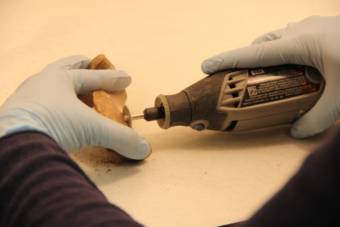
Bones can be a window to the past. They can tell you what an animal was eating and where it was eating it. Misarti said they can extract reproductive hormones, stress hormones, and ancient DNA. And they can tell how much mercury was in the environment when the animal was alive.
After collecting tiny bits of bone fragments — about two grams of each animal — Funk and Misarti traveled to their lab in Fairbanks, where the team began analyzing the bones for mercury.
“It appears that we do have some changes through time over the last 4,000 years,” Misarti said. “From there, we’re looking at what those patterns might mean.”
They don’t have a lot of the answers they’re hoping to find yet. This is the beginning of a long, complicated process, and researchers expect to go through hundreds of samples over the next few years.
